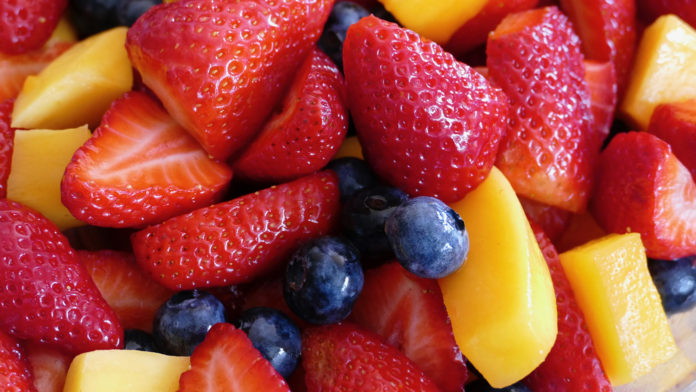You may have never heard of hexanal before, but chances are good that you’ve met. It’s the molecule behind the distinctive smell of freshly cut grass. It’s also produced by every living plant, meaning that if you’ve ever eaten a fruit or vegetable, you’ve ingested it.
Hexanal is a natural pest repellant, and it turns out that in higher amounts, it’s also a fountain of youth for aging fruit. If all goes as planned, in the next two years hexanal could become a key player in extending the shelf life of produce and reducing food waste worldwide.
In the meantime, University of Guelph researchers Jayasankar Subramanian and Elizabeth Finnis are helping farmers find the most effective ways to apply hexanal to their crops both pre- and post-harvest to get the best prices with the least wasted fruit.
As fruit ages, a major player is an enzyme called phospholipase D. This enzyme breaks down the cell membranes in fruit that provide structure, and when the cell membranes collapse, fruit starts to shrivel and rot.
In the presence of elevated levels of hexanal, fruit produces less phospholipase D, and this reduction slows down aging and keeps fruit fresh.
Applied before harvest, hexanal can reduce the amount of fruit falling off the tree by as much as 40 percent. This can allow farmers to obtain better fruit that ripens on the tree, and can also increase their yield by several kilograms per tree.
Not only that, but selective application to just a portion of the trees on the farm can extend the growing season, allowing farmers to avoid the glut of fruit hitting the market all at once. This means better pricing for the same fruit. In the third world, this can help families send their children to school.
Fruit dipped in hexanal or stored with hexanal wraps or sachets after harvest saw their shelf life extended by 50 percent or more: mangoes keep for up to 23 days, bananas for up to 40 days, and peaches and nectarines for over 2 weeks. Stronger and fresher fruit means that even delicate varieties can more easily be shipped and distributed to consumers with less waste.
The technology still has regulatory hurdles to clear, and farmers will still need to find the best schedule and application method for each fruit they want to preserve. However, the research team has good reasons to believe that hexanal will be shown to be effective and safe for use.
So far, there are no signs that hexanal is harmful to plants, animals, or insects, and it is already approved by Health Canada for use as an additive in some food products as a flavour formula. The hexanal formulations can be gently washed off, but hexanal also evaporates on its own within 24 hours, leaving no residue on fruit afterwards.
Amidst growing pressure to prevent food waste and reduce the amount of land needed for agriculture, this simple solution is so close that we can almost taste it.








































